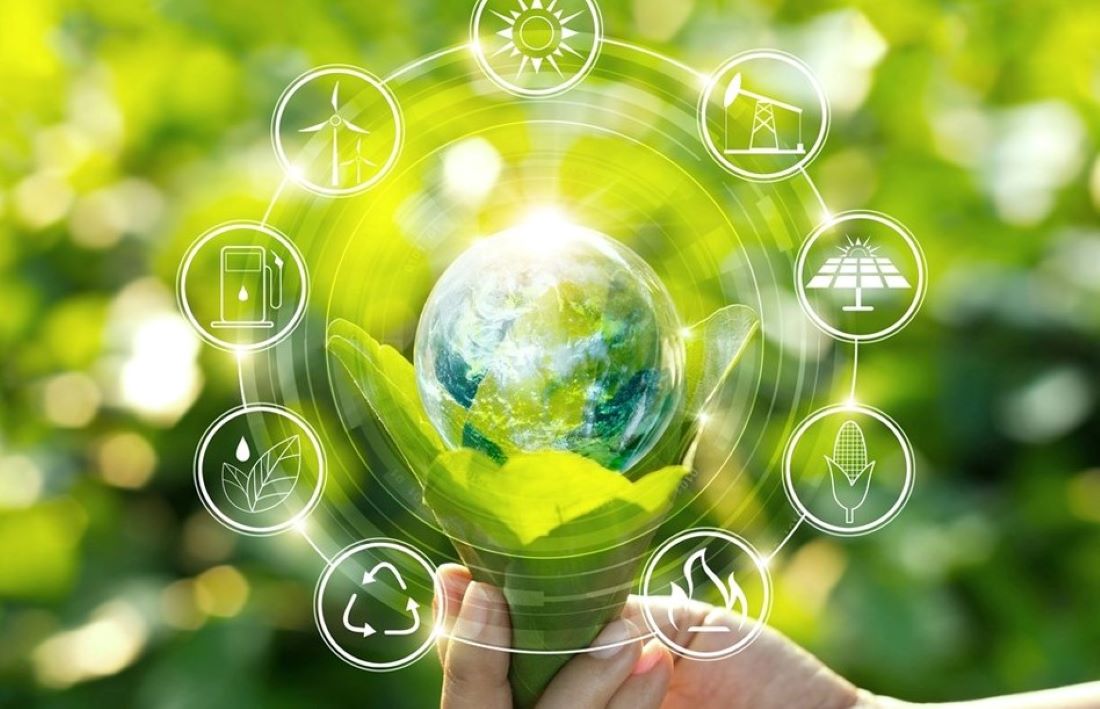
By Priyadarshi Nanu Pany
Bhubaneswar: Sustainability is the new buzzword in a digital-first world. And ‘net-zero’ is the latest obsession with countries and companies. The concerns are not amplified. The switch to a carbon-neutral world is inevitable to save a vulnerable human race from the catastrophic effects of climate change.
The world is itching to be net zero by 2050. That’s an overly ambitious target. Achieving the net-zero mission is finding the right balance between sources and sinks of GHG (Green House Gases) emissions. To reach the net zero target by 2050, the world must spend a staggering $4 trillion on clean energy by 2030, 3X of what’s being invested now.
An IEA study shows that global carbon-dioxide (CO2) emissions rose by 6% in 2021 to 36.3 billion tonnes, their highest ever level, as the world economy rebounded strongly following the Covid-19 crisis. To absorb this volume of carbon emissions, the world needs to plant 2.8 billion trees or create a forest the size of Portugal.
And if no action is taken, the volume of GHG emissions is projected to swell by 50%, primarily due to a 70% growth in energy-related CO2 emissions. The atmospheric concentration of GHGs could reach 685 parts per million (ppm) CO2- equivalents by 2050. According to the United Nations Environment Programme (UNEP) Emissions Gap Report 2021, the total global emissions need to be slashed to 18 billion tonnes (or 25 billion tonnes of CO2 equivalent) by 2030 if we are to achieve the net zero mission by 2050.
The scenario wakes us to the scale of the challenge we have on our hands to build a resilient, net zero world.
It also begs a critical question- how much of this pernicious carbon are we capturing now? Per the Global CCS Institute’s 2021 Status Report, plants in operation or under construction have the current capacity to capture 40 million metric tons of CO2 per year. Carbon capture, use, and storage technologies can capture more than 90 percent of carbon dioxide (CO2) emissions from power plants and industrial facilities.
Nations have converged efforts to reduce carbon emissions. India, the third highest emitter after China and US, has pledged to cut emissions by one billion tonnes by 2030, down from 2.8 billion tonnes in 2021. On an organizational level, too, the net zero clock is ticking. More than 3,000 companies have made net-zero commitments as part of the United Nation’s “Race to Zero” campaign.
It’s not just about greening our planet. The transition to a net zero economy can save lives, catalyze new industries, create millions of jobs and unlock immense economic value. Today, enterprises don’t have a choice but to embrace the net zero campaign. As they put it, ‘What’s measured or rewarded gets done’. There’s a mounting demand from stakeholders, consumers and investors that companies take action on a sustainable future. And tech companies can be the anchors of this transition.
Technology companies driving digital transformation worldwide have come to the forefront of the net zero euphoria. The digital companies are spot on by purchasing growing shares of renewable energy, investing in carbon removal, and issuing green bonds. Plus, they are helping to build viable markets for renewables and accelerate global progress towards carbon neutrality. Seven of the world’s top ten largest corporate purchasers of renewables in 2020 were digital companies.
The products and services of digital companies have become crucial to enable emission reductions in other sectors. BP entered the electric-vehicle power distribution market with its pulse platform, and the Mitsubishi Heavy Industries CO2NNEX carbon capture ecosystem platform is enabling the green economy. Mitsubishi Heavy Industries and IBM created CO2NNEX as an interconnected ecosystem of CO2 emitters, carbon capturers, storage providers and CO2 users. The digital platform linking partners underpins this ecosystem.
Bloomberg reports that the largest US tech corporations are taking unprecedented action against climate change. The tech industry plays an essential role in this journey. By improving their company’s operations and connections, they can lead the change and show the way for emission cuts across the value chain.
Long-term solutions toward a sustainable future require the help of the technology sector. The electronic design industry has the opportunity to develop clean energy systems, improve data analytics for environmental applications, and advance machine technology across transportation, construction, and natural resource management. Together with UN Energy and Sustainable Energy for All, Google is expanding the availability of renewable energy 24×7.
Major cloud service providers such as Amazon Web Services (AWS), Google Cloud, and Microsoft Azure are well positioned to provide advanced analytical services. They are developing ESG (Environment, Social & Governance) strategies based on cloud and analytical services and utilizing technologies such as Artificial Intelligence (AI), Machine Learning (ML), Internet of Things (IoT), and Smart Grid solutions which they are piloting with key clients.
Cloud migration alone can reduce CO2 emissions by nearly 60 million tons a year, according to a 2020 report from Accenture. Migration to the public cloud could achieve a 5.9 per cent decrease in carbon emissions globally- it’s like removing 22 million cars off the roads.
There’s much to be unlocked from Blockchain technology that offers traceability, transparency, security, speed, and efficiency — all of which could be used to track carbon emissions within an organization and across its supply chain. Blockchain ledgers could also be used for tracking rare metals (for example, cobalt used in batteries) or food supply chains.
Think tech for a buzzing net-zero economy. The action has begun.
(Writer Priyadarshi Nanu Pany is the CEO of CSM Technology)




